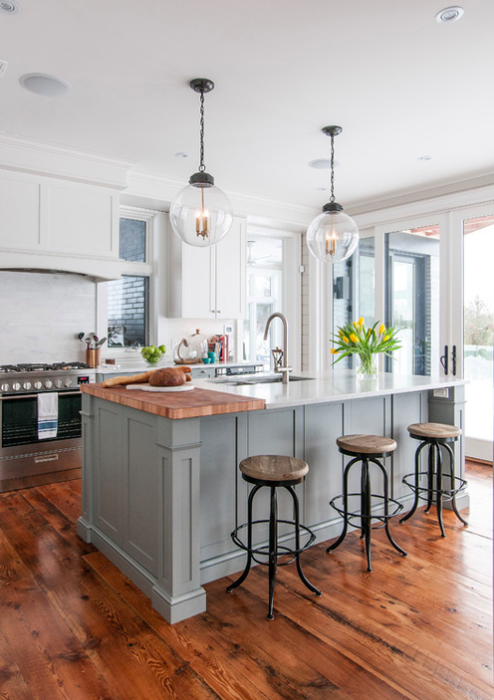The Most Effective Kitchen Island Leg Options for Modern and Standard Kitchens
The Most Effective Kitchen Island Leg Options for Modern and Standard Kitchens
Blog Article
The Relevance of a Sturdy Kitchen Island Leg in Developing a Functional Cooking Area
A sturdy cooking area island leg functions as an essential part in establishing a practical food preparation setting, giving required assistance for both the countertop and numerous cooking area activities. The stability it supplies can significantly minimize the risk of accidents in high-traffic locations, while likewise adding to the overall visual comprehensibility of the area. As kitchen areas advance right into multifunctional locations for cooking, dining, and mingling, the selection of materials and design considerations for island legs becomes progressively important. Comprehending these aspects can transform your kitchen area into a safer and much more effective area, prompting more exploration into the very best choices available.
Benefits of Sturdy Island Legs
Providing vital support, tough kitchen area island legs play a pivotal duty in improving the performance and toughness of kitchen islands - kitchen island leg. These legs not just bear the weight of the kitchen counter and any type of added products put on the island, however also add to the overall stability of the structure. A well-supported kitchen island makes sure that it remains upright and useful, also under heavy usage, which is particularly important in hectic kitchen area atmospheres
Moreover, sturdy island legs can enhance the aesthetic allure of the cooking area. They supply a strong framework that can match numerous design styles, from contemporary to conventional. This flexibility enables homeowners to personalize their cooking area islands according to individual preference while guaranteeing that the architectural honesty remains uncompromised.
In addition to their supportive function, durable kitchen island legs can likewise enhance safety. Eventually, investing in sturdy kitchen island legs is important for a functional and aesthetically pleasing cooking area.
Materials for Kitchen Island Legs
When choosing materials for kitchen area island legs, longevity and visual charm are crucial factors to take into consideration,. The most usual products include wood, metal, and crafted timber, each offering special advantages.
Hardwood, such as oak, maple, or cherry, is a traditional selection due to its strength and classic charm (kitchen island leg). It can withstand substantial weight and is resistant to put on, making it ideal for high-use cooking area atmospheres. Additionally, hardwood can be tarnished or painted to complement different kitchen designs
Metal legs, usually crafted from stainless-steel or wrought iron, provide a contemporary and industrial appearance. They are extremely solid and can support significant tons while being immune to moisture and warm, which is beneficial in a cooking area. Steel legs can additionally be easily cleansed, enhancing their functionality.

Layout Factors To Consider for Stability
The option of products for kitchen island legs directly influences the layout considerations for security. When developing a cooking area island, it is extremely important to assess the weight-bearing ability of the selected materials. Much heavier materials, such as solid timber or metal, typically provide better stability, particularly under the stress of day-to-day use.
Furthermore, the leg style must integrate correct geometry to boost stability. A broader base raises the assistance location, reducing the risk of tipping or tottering. Factor to consider should additionally be given to the height of the legs; out of proportion leg lengths can cause inequality, compromising the total stability of the island.
Moreover, the distribution of weight across the island is crucial. Guaranteeing that the leg positioning aligns with the heaviest components, such as appliances and counter tops, will certainly better enhance stability.
Maintenance Tips for Durability

Depending on the product of the legs-- whether timber, steel, or composite-- appropriate cleaning techniques need to be used. Metal legs may need a light polish to stop corrosion and preserve their gloss.
In addition, tightening up bolts and screws consistently can ensure stability and stop tottering. Think about strengthening the legs with extra brackets or sustains to enhance toughness if the kitchen area island experiences hefty usage. article source Using a protective finish or sealer can secure against moisture and stains, extending the life expectancy of the legs. By following these maintenance pointers, home owners can guarantee their kitchen area island legs remain robust and functional for years ahead.
Picking the Right Leg Design
Regular maintenance ensures that kitchen island legs stay tough and useful, but picking the appropriate leg design is equally vital for both aesthetics and support. The selection of leg design can considerably affect the overall layout and harmony of your cooking area.

Functionality is another important facet. Thicker legs or those with a durable base can sustain heavier counter tops and devices, improving the island's energy. On the other hand, slim legs may develop a ventilated look, appropriate for lighter styles however potentially less encouraging.
Verdict
In recap, the relevance of durable cooking area island legs can not be overemphasized in the development of try this site a functional cooking location. These legs give essential assistance, boost stability, and add to the total visual of the kitchen area.
A durable cooking area island leg serves as a fundamental part in establishing a practical food preparation environment, supplying required support for both the counter top and different kitchen activities.Providing important assistance, sturdy kitchen island legs play a critical role in enhancing the performance and durability of kitchen area islands. Eventually, investing in tough kitchen island legs is necessary for a practical and visually pleasing cooking area.
Consideration should likewise be offered to the elevation of the legs; out of proportion leg lengths can lead to inequality, endangering the general stability of the island.
Wood legs offer warmth and a traditional look, while metal legs offer a modern-day and industrial feeling.
Report this page